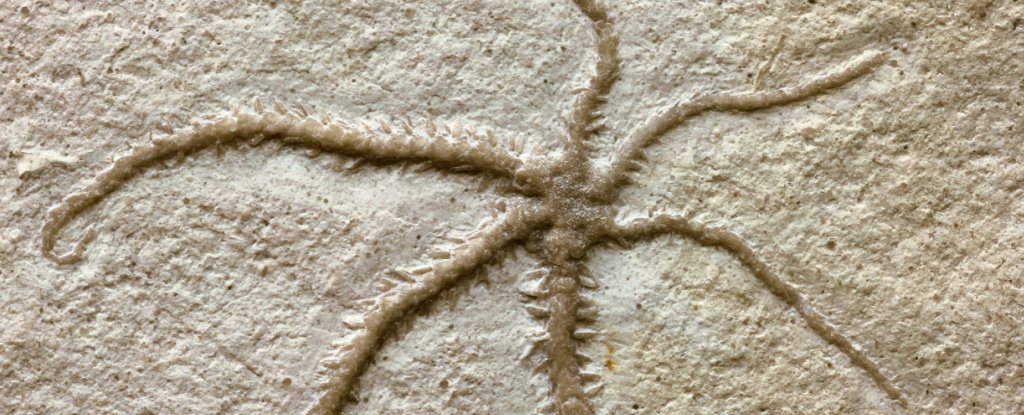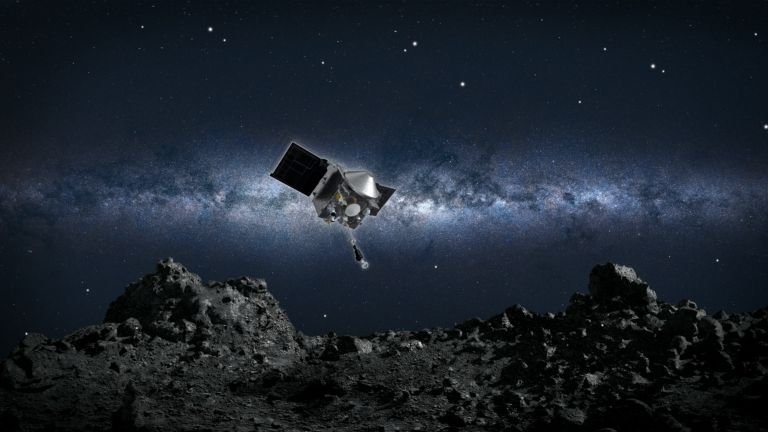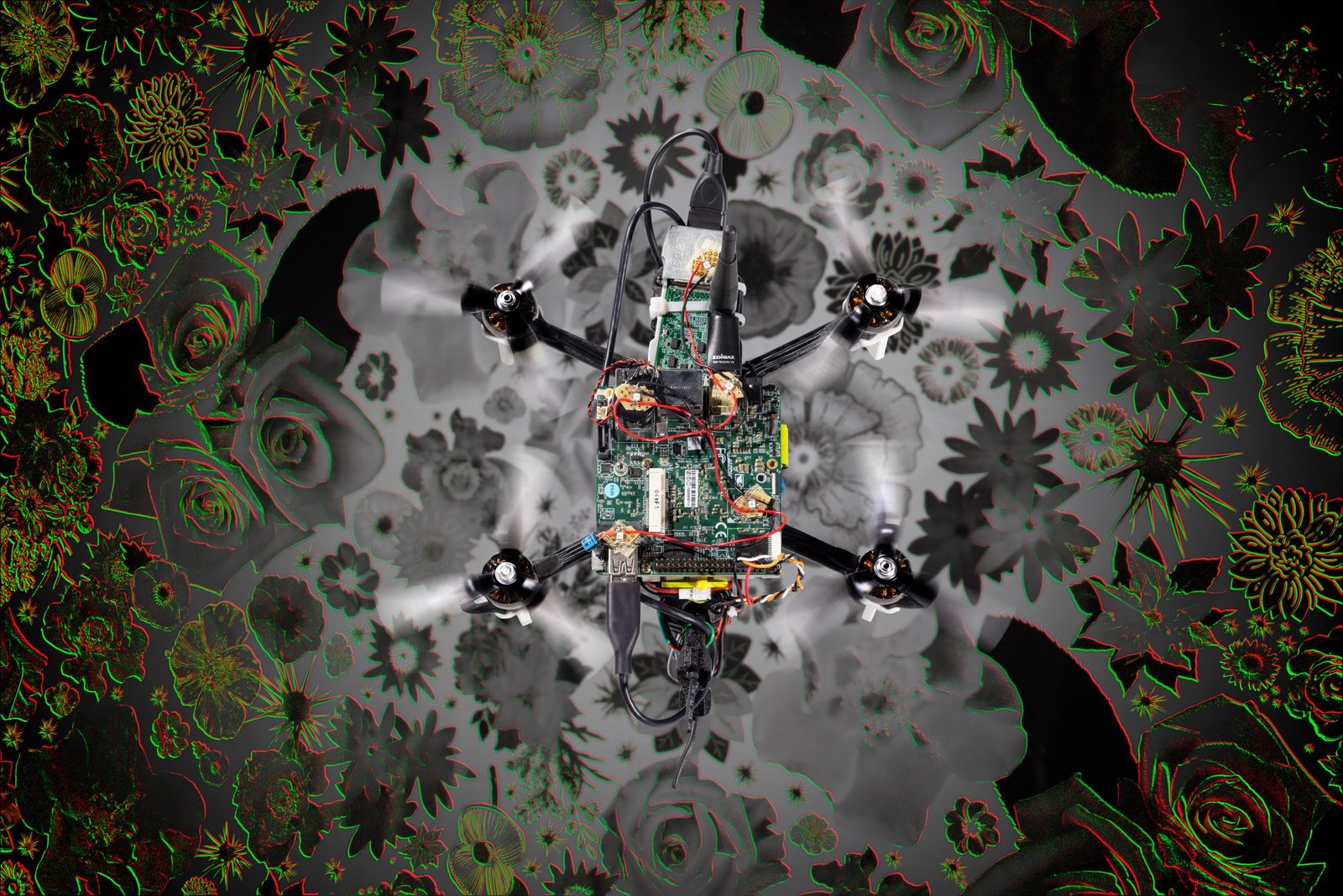Earth’s fossil record stretches across long passages of unfathomably deep time, but each fossil is only a brief snapshot – of the moment when some living thing was buried in a flash and then slowly petrified.
In a stunning new example, scientists working in Germany have uncovered and described a six-armed brittle star, fossilized as it was partway through regenerating one body half.
This truly exceptional fossil was excavated in 2018 from a limestone deposit in southern Germany that was once a deep lagoon filled with coral meadows and sponge beds. Now, it’s a fossil garden littered with shark teeth and the remains of ancient pterosaurs, crustaceans, and crocodile-like creatures from the late Jurassic.
The fossil, pictured below, is the first and only known specimen of what scientists have described as a new species of brittle star, Ophiactis hex.

Many modern-day brittle stars and some starfish reproduce via fissiparity, a process where the star ‘splits’ in half and each side regrows its missing parts. It’s also known as clonal fragmentation, because the two new stars are clones of the original.
Although fissiparity is found across distantly related lineages of starfish and brittle stars, we don’t know much about when in Earth’s history it evolved for the first time, only that stars that reproduce in this way today tend to have six arms, instead of five – quite sensibly, to make for an even split.
“While the biology and ecology of clonal fragmentation are comparatively well understood, virtually nothing is known about the evolution and geological history of that phenomenon,” Ben Thuy, a paleontologist at the Luxembourg National Museum of Natural History, and colleagues explain in their paper describing the new find.
Dated to 155 million years old and preserved so well you can see its hook-shaped arm spines, the Ophiactis hex fossil provides striking evidence that clonal fragmentation in star-shaped echinoderms has deep evolutionary roots.
It was named after the magical supercomputer in one of Terry Pratchett’s Discworld novels, a machine that is capable of thinking the unthinkable. Now it seems this team of paleontologists has found the unfindable: a six-armed brittle star that shows fissiparity is an ancient asexual reproductive strategy tied to that symmetrical body plan.
“While skeletons of ophiuroids with individual arms frozen in the process of regeneration are relatively common in the fossil record, cases of individuals with a regenerating body half are exceedingly rare,” Thuy and colleagues write.
“To the best of our knowledge, the specimen described in the present paper is only the second case known so far, and the first one for which regeneration seems indeed linked to six-fold symmetry and clonal fragmentation.”
However, with only one specimen of Ophiactis hex found so far, the researchers admit it’s impossible to know exactly what the species looked like before it started dividing and whether it was six-armed or not.
The only other specimen that has come close to providing an example of ancient reproduction in brittle stars was described in 1851 and is lamely inconclusive, thought to have sprouted a sixth arm after an injury.
The study has been published in Proceedings of the Royal Society B: Biological Sciences.










